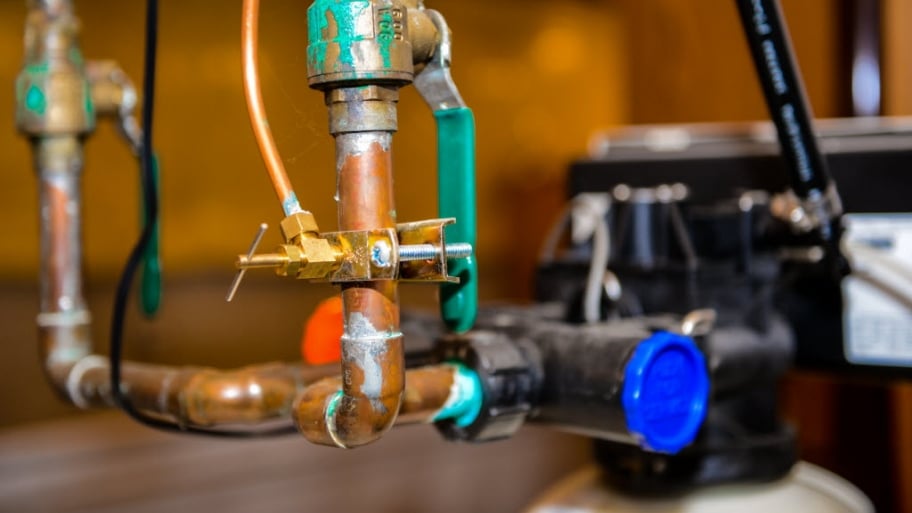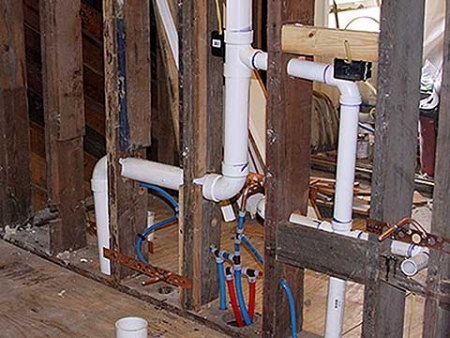What Type of Plumbing Pipe Do I Have?

Learn what kinds of plumbing pipes are inside your home’s walls.
Do you know what types of plumbing pipe materials supply water to your home and drain it back out? Even if you’re planning to hire a plumber to maintain or upgrade your home’s plumbing system, understanding the basics will help you troubleshoot when things aren’t working properly. Get quotes from up to
3 plumbers! Enter a zip below and get matched to top-rated pros near you.
Knowing what type of plumbing materials are in your home may make that repair or replace decision easier to determine, and it can allow plumbers to give you a more accurate estimate before they arrive at your home for a service call. But it can be confusing since a plumbing system is always a mix of different types of pipe, used for different purposes.
To get you started, here are the four most common types of plumbing pipes that keep water running in and out of your home:

Knowing the types of plumbing pipe material in your home can make for easier repairs and maintenance. (Photo courtesy of Angie’s List member Maralisa E. of Lake Charles, Louisiana)
1. Galvanized steel pipe

Galvanized or zinc-coated steel pipes appear thick and heavy with a gray or silver metallic exterior. Galvanized steel pipes are not commonly used in modern new construction, but if your home was built from the 1930s to the 1980s, it’s common to find galvanized pipes.
Since steel pipe is naturally heavy, it’s more difficult to work with than other pipe materials, and although it’s very durable, galvanized steel does have a limited lifespan. The zinc coating can eventually break down and cause the pipe to rust internally, which may lead to reduced water pressure and clogged water lines.
2. Copper pipe
Copper pipes began to appear in homes around the 1930s. However, it’s most common in homes built from the 1960s to the present. Copper plumbing is typically thin-walled, making it smaller in diameter than steel pipe. Over time, oxidation might change copper pipes from their original shiny reddish hue to a dark brown or green.
Copper is known for its durability, heat tolerance and long life span. One concern with copper, especially in older homes, is that the joints — where the pipes connect to various fittings — may contain lead-based solder. Another big disadvantage is that the long-term increase in the market price for copper as a commodity has made it a very costly option.
3. PVC pipe
Polyvinyl chloride, commonly called PVC, can be found in homes built from the 1950s to present. PVC generally looks like white, hard plastic with distinctive markings down the length. These markings identify the type of PVC and its temperature rating and diameter.
The main advantage of PVC plumbing is that it doesn’t corrode, rust, or degrade over time. However, since PVC isn’t suitable for hot water supply lines, it’s mainly for your home’s sink, toilet, and bathtub drain lines or vent stacks.
4. PEX pipe
Cross-linked polyethylene, commonly know as PEX pipe, has become the standard for home plumbing since the late 1990s. It can be found in almost any color, but most homes use red tubing to indicate hot water supply lines and blue tubing to designate cold water supply lines. PEX typically features a slight natural curve because it’s packaged in a coil. Similar to PVC pipe, PEX displays identifying markings and there is no worry of rust or corrosion. Unlike PVC, PEX is never used for drain lines.
PEX is very flexible, easy to install, and can be used in most new plumbing installations, including retrofits for existing homes. The disadvantages to PEX are that it must be kept out of direct sunlight and some fittings can be costly.